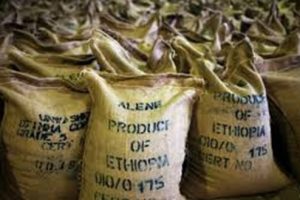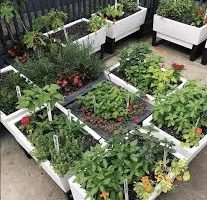
Various sources indicate that the Ethiopian Biodiversity Institute (EBI) founded in 1976, is the oldest and largest seed bank of its kind in sub-Saharan Africa. It makes the country to be the holder of an enormous number of plant species. Currently, the gene bank holds 81,805 accessions of 576 plant species.
Experts in the area emphasize the need for promoting awareness on the importance of endemic and high economic value crop and horticultural plant seeds conservation and development. Handing down the most important crop and horticulture species to the future generations still requires the coordinated efforts of the institute and pertinent stakeholders. In addition, the country is also expected to utilize the full potential of the agricultural sector from its biodiversity.
Thus, utilizing and gaining more benefits from its Africa’s leading Gene Bank (cold room) is the next assignment in which restoring ancient and indigenous crop and horticulture species sought to make the country to be competitive with flavorsome and brand agricultural products.
Arabica Coffee Bean, Teff, Enset, and Nug, among others, are the major indigenous crops and horticulture grown only in Ethiopia. These crops are being widely dispersed from Ethiopia to the other world and currently cultivated in different countries.
Further to these, the gene bank includes a variety of major export items such as oilseeds and spices. Currently, a total of 1674 accessions of spices; fenugreek, pepper, coriander, black cumin, white cumin, basil, among others are conserved well in the gene bank.
Ethiopian Biodiversity Institute (EBI) Director-General MelesseMaryo (Ph.D) told The Ethiopian Herald that the institute is contributing its part in the sustainable restoration of major crops and horticulture species. Having diversified geographical topography, climate and soil make the country to entertain a variety of indigenous plant species, he added.
Thus, having these major opportunities, the country conserved numerous amounts of crops and horticulture biodiversity in the past. And this enhances its potential to be one of the leading centers of origins of various crops and horticulture biodiversity in the world, he noted.
Organized with suitable climate and soil for the plant species, the country’s gene bank and other supportive field gene banks located in different parts of the country helps to maintain indigenous crop and other plant species for a longer period. But, annual crops require replanting and replacing the cultivation field annually. Currently, coffee, spices, and root and tuber crops are being conserved in the field of gene banks, according to him.
As Ethiopia is a center of origin and diversity of coffee Arabica, it is believed that it provides notable gifts and contributions to the rest of the world. This wide genetic base has provided several resources of global significance from which improved varieties with higher productivity, quality, disease, and pest resistance have been developed. Thus, the collection and conservation of this valuable genetic resource are critical for future development and sustainable use of the crop.
The institute started the conservation of coffee genetic resources three decades ago by establishing its first field gene bank in Choche. Currently, a total of 5,552 coffee genetic resources collected from different parts of the country are conserved in different field gene banks.
The country is also suitable for growing different root and tuber crops. Especially, in the Southern and southwestern parts of the country, these crops contribute significantly to the food security of the people. The commonly grown root and tuber crops include Enset, Irish potato, sweet potato, taro, Tania, cassava, yams, among others are endemic to the country and often cultivated in home gardens. Currently, a total of 766 root and tuber crops are conserved in field gene banks.
On the other hand, spices are also the major export items that have been generating foreign exchange for the country. In Ethiopia, the cultivation and use of spice crops have a long history. The crops are often grown in small plots of land and used for home consumption. However, some spices such as black cumin, white cumin, hot pepper, and fenugreek are cultivated in large plots of land and served as major sources of income for growers. Currently, 355 accessions of indigenous and exotic spice crops are conserved well in the field gene bank.
Moreover, the institute undertakes continuous research and follows upto identify the status of plants and crops throughout the country. It prioritizes highly endangered, indigenous, and high economic value crop and horticulture species are prioritized while doing conservation. The institute administers five horticulture field gene banks located upon geographic area divisions and horticulture specialty areas that are assisting to enhance horticulture conservation countrywide, he indicated.
As to him, indigenous crops and horticulture were severely damaged due to natural [drought, pest and climate change] and manmade [population growth and lack of awareness] in the past. But, now following successive endeavors of the institute and other stakeholders, the country has suitably maintaining its endemic crop and horticulture species.
The institute is doing its level best along with the conservation of these tangible national indigenous food security assets. And introducing new improved seeds annually have to prioritize Ethiopian endemic crops to harness the full potential of the agriculture sector. Prioritizing indigenous seeds in conservation and distribution to the farmers give an impetus to save indigenous crops from extinction, he explained.
Regarding collection and conservation works, the institute’s gene bank is one of the leading banks in Africa and has accomplished meaningful work in exploration, collection, and conservation of plant genetic resources. About 167,489 accessions of plants had been distributed from the country’s gene bank collections to different research and educational institution in Ethiopia as well as worldwide.
In sum, safeguarding biodiversity contributes a lot in promoting agriculture. Therefore, there should be a clear stance on a sustainable biodiversity conservation for agricultural productivity
The Ethiopian Herald July 23, 2020
BY TEWODROS KASSA


